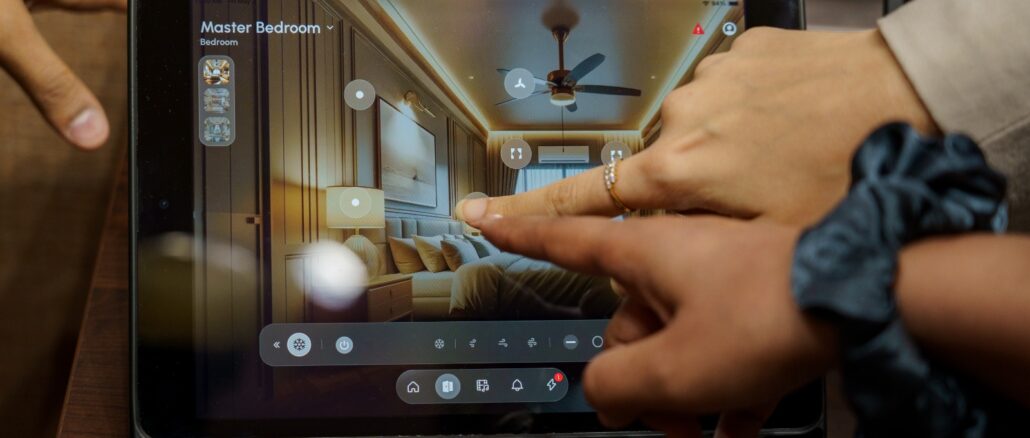
By Muskan Salgia, Vice President, CasaDigi
Today’s modern homes are no longer confined to the fixed spaces of just living rooms, bedrooms or a kitchen. A home is expected to be much more: a workspace at 9 AM, a gym by evening and a party hall by 9 PM. This shift isn’t just in terms of layout and aesthetics, it’s a fundamental change in how we rethink living spaces should respond to someone’s life rhythms. According to Nicholas Bloom, an economist and telework expert, approximately one-third of all working days are remote, slashing corporate real‐estate expenditures, and up from 5 % before the pandemic. Currently, real estate trends also show a surge in demand for multipurpose rooms and intelligent spaces, specifically in premium and luxury housing segments. As these preferences evolve, the question arises: Is your home truly designed for the way you live?
Smart Living Begins at Home
Luxury has always been about comfort, but in today’s era, comfort stems from adaptability. A beautiful marble finish or imported chandelier no longer defines a luxury home on its own. What matters is how intuitively a home supports the daily lives of those who occupy the space. True luxury begins with homes that are not just aesthetic but also responsive. The provision of dimming lights without leaving the couch, setting the ambient temperature according to each family member’s preference, or transforming a living room into a home theatre with a single voice command are no longer mere luxuries, but expectations.
One App. Different Moods. Infinite Possibilities
Home is a deeply personal space that reflects someone’s aspirations, mood and even routines. When expectations continue to change, so should the environment surrounding them. Consider how a day normally begins—with soft daylight, calming music and a cup of coffee. By evening, you might want to wind down, and your kids might need a quiet focus corner for studying. Conventional homes are often too rigid to accommodate this level of adaptability. Smart home automation apps allow residents to personalise how they experience each room at home, ranging from lighting to curtains and security, without disrupting any collectively shared spaces. This form of customisation, often aided by digital presets and sensory and voice feedback systems, brings design and behaviour perfectly in sync.
Spaces that Shift: From Offices to Retreats
After the COVID-19 pandemic, the divisions between personal space and work life have briefly blurred. According to a 2022 Gartner survey, nearly 48% of employees now follow a hybrid working model. As a result, people’s homes need to adapt or switch between various routines, such as a cosy unwinding session or a professional work setup to prep for spontaneous Zoom calls.
Guest rooms that double up as home offices, or dining spaces that can function as meeting spaces, are no longer a luxury. This means concealed storage, modular layouts, responsive lighting, and layered technology that reacts to presence, not just programming. The use of butler modules or preset routines—configured for different times of day or user preferences—is helping spaces shift effortlessly between these identities. It’s not only about form anymore. It’s about a function made invisible.
Invisible Intelligence Behind Inspired Living
The real promise of home automation isn’t in the novelty of control—it’s in the intelligence of integration. Households with smart home devices in India are projected to exceed 50 million by 2026. But there’s a growing distinction between having smart devices and having a smart home. The difference lies in how these systems work together. Homeowners are increasingly embracing modules that unify living experiences into seamless routines. This isn’t about over-automation. It’s about eliminating the mental clutter that comes from managing a hundred small decisions every day.
Homes are becoming smarter by the year. However, the question is—are they becoming smarter in ways that genuinely serve the people who inhabit the spaces? Good design is no longer measured by how a home visually looks; it is assessed by how it can function during the most mundane routines of everyday life, how it can support you on a packed weekend night or during your sudden work trip or getaway.
The lines between work, personal time and family time are no longer clearly drawn. Our environments must reflect this reality—static layouts and fixed rooms simply no longer suffice. Homes must be designed to shift, to support hybrid lifestyles without friction. Designers, consultants and homeowners are slowly adapting to this shift. When design and technology work together to anticipate rather than react, the home moves from being a backdrop to becoming a partner in daily life. That’s not just smarter living, it’s more considered, more human, and ultimately, more aligned with how we actually live today.
Author:
Muskan Salgia, Vice President, CasaDigi
Email: media@casadigi.com
Social Media: Instagram | LinkedIn

